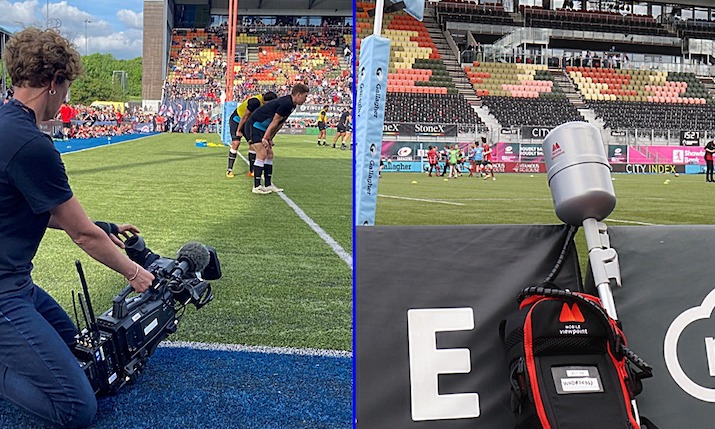Body shot: Vislink’s take on the trends in 2023 and predictions for 2024
 By Michel Bais, Vislink chief product officer.
By Michel Bais, Vislink chief product officer.
Working in the sports broadcasting industry is often just as fast-paced and awe-inspiring as the live events our solutions help cover. As the year comes to a close, I’ve been reflecting on the ways in which the industry has changed and where it will go next. Here’s a rundown of the trends that defined 2023 and my predictions for 2024.
In 2023, the business of live sports streaming exploded, and with it, the need for new approaches to deliver and monetise content. This put the spotlight on remote production and creating scalable and agile workflows that could leverage all existing frameworks. Broadcasting companies increasingly adopted hybrid work arrangements, with a combination of onsite and remote production. Fully remote cloud production also increased dramatically.
New opportunities
We saw industry players take advantage of new opportunities to distribute pristine-quality content cost effectively, while also maintaining deployment flexibility in terms of staffing and location decisions.
2023 also saw companies increasingly embrace automation – including systems that leverage artificial intelligence (AI) – to spur efficiency. As budgets tightened, automation helped TV production companies optimize workflows, produce content faster and manage teams more effectively.
If 2023 was the year of automating and optimizing workflows, 2024 will be the year that immersive and interactive broadcasting takes a giant step forward, and fans will be the big winners.
First, I expect we will see more 5G-centric applications in use across a range of live sports. In this age of short attention spans, production companies will use hybrid public/private 5G solutions to create more opportunities to attract and engage new and existing fans. These hybrid solutions enable seamless live coverage across a range of devices and deliver real-time content sharing, providing viewers with unprecedented access and interactivity.
Body cams
I believe we will see the adoption of more direct video feeds from body cameras worn by players and referees, bringing fans unprecedented first-person perspectives of the action. The reason we haven’t seen much of this yet is twofold: previous technology hasn’t been particularly reliable, and regulatory bodies do not currently permit this type of footage on a large scale.
However, recent advancements in miniature transmitters have made it possible to easily capture reliable, high quality footage from bodycams. There were some interesting trials done by Premier League football last summer and the footage was stunning. With the enabling technology now available, I am optimistic that, in 2024, FIFA and other regulatory bodies will recognise the value of such immersive content and consider adjusting regulations accordingly.
I am convinced that the integration of 5G and enhanced viewing perspectives have the power to completely revolutionise the audience experience. For broadcast operators, 2024 will drive increased demand for end-to-end solutions that can seamlessly support different technology platforms and novel production workflows.
With more advanced technology, innovative content formats and delivery options, 2024 promises to be the most exciting year in sports broadcasting yet.

